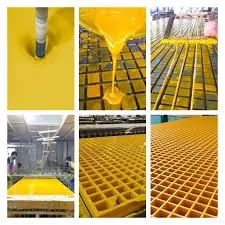
-
 Afrikaans
Afrikaans -
 Albanian
Albanian -
 Amharic
Amharic -
 Arabic
Arabic -
 Armenian
Armenian -
 Azerbaijani
Azerbaijani -
 Basque
Basque -
 Belarusian
Belarusian -
 Bengali
Bengali -
 Bosnian
Bosnian -
 Bulgarian
Bulgarian -
 Catalan
Catalan -
 Cebuano
Cebuano -
 China
China -
 China (Taiwan)
China (Taiwan) -
 Corsican
Corsican -
 Croatian
Croatian -
 Czech
Czech -
 Danish
Danish -
 Dutch
Dutch -
 English
English -
 Esperanto
Esperanto -
 Estonian
Estonian -
 Finnish
Finnish -
 French
French -
 Frisian
Frisian -
 Galician
Galician -
 Georgian
Georgian -
 German
German -
 Greek
Greek -
 Gujarati
Gujarati -
 Haitian Creole
Haitian Creole -
 hausa
hausa -
 hawaiian
hawaiian -
 Hebrew
Hebrew -
 Hindi
Hindi -
 Miao
Miao -
 Hungarian
Hungarian -
 Icelandic
Icelandic -
 igbo
igbo -
 Indonesian
Indonesian -
 irish
irish -
 Italian
Italian -
 Japanese
Japanese -
 Javanese
Javanese -
 Kannada
Kannada -
 kazakh
kazakh -
 Khmer
Khmer -
 Rwandese
Rwandese -
 Korean
Korean -
 Kurdish
Kurdish -
 Kyrgyz
Kyrgyz -
 Lao
Lao -
 Latin
Latin -
 Latvian
Latvian -
 Lithuanian
Lithuanian -
 Luxembourgish
Luxembourgish -
 Macedonian
Macedonian -
 Malgashi
Malgashi -
 Malay
Malay -
 Malayalam
Malayalam -
 Maltese
Maltese -
 Maori
Maori -
 Marathi
Marathi -
 Mongolian
Mongolian -
 Myanmar
Myanmar -
 Nepali
Nepali -
 Norwegian
Norwegian -
 Norwegian
Norwegian -
 Occitan
Occitan -
 Pashto
Pashto -
 Persian
Persian -
 Polish
Polish -
 Portuguese
Portuguese -
 Punjabi
Punjabi -
 Romanian
Romanian -
 Russian
Russian -
 Samoan
Samoan -
 Scottish Gaelic
Scottish Gaelic -
 Serbian
Serbian -
 Sesotho
Sesotho -
 Shona
Shona -
 Sindhi
Sindhi -
 Sinhala
Sinhala -
 Slovak
Slovak -
 Slovenian
Slovenian -
 Somali
Somali -
 Spanish
Spanish -
 Sundanese
Sundanese -
 Swahili
Swahili -
 Swedish
Swedish -
 Tagalog
Tagalog -
 Tajik
Tajik -
 Tamil
Tamil -
 Tatar
Tatar -
 Telugu
Telugu -
 Thai
Thai -
 Turkish
Turkish -
 Turkmen
Turkmen -
 Ukrainian
Ukrainian -
 Urdu
Urdu -
 Uighur
Uighur -
 Uzbek
Uzbek -
 Vietnamese
Vietnamese -
 Welsh
Welsh -
 Bantu
Bantu -
 Yiddish
Yiddish -
 Yoruba
Yoruba -
 Zulu
Zulu
frp boat body
The Evolution and Benefits of FRP Boat Bodies
Fiber-reinforced plastic (FRP) has revolutionized the marine industry by providing a durable, lightweight, and corrosion-resistant alternative to traditional materials like wood and metal. FRP boats have gained immense popularity over the past few decades due to their superior performance characteristics and environmental benefits. This article explores the evolution, advantages, and applications of FRP boat bodies.
The Evolution of FRP in Boating
FRP materials have been in use since the mid-20th century, initially gaining traction in the construction of smaller boats and yachts. Engineers recognized the potential of fiberglass combined with reinforcing materials for creating strong yet lightweight boat structures. Over the years, advancements in resin technologies, manufacturing processes, and composite materials have led to more robust and versatile FRP boat designs.
Manufacturers today employ various techniques like hand layup, vacuum bagging, and infusion molding to create FRP parts with greater precision and strength. These innovations have allowed for larger vessels to be constructed with FRP, including commercial ships and luxury yachts, thereby expanding the market and increasing awareness of FRP’s advantages.
Advantages of FRP Boat Bodies
1. Lightweight Construction One of the most significant benefits of FRP boat bodies is their lightweight nature. Compared to traditional materials, FRP allows for an optimized design that enhances speed and fuel efficiency. Lighter boats require less power to achieve the same speed, resulting in reduced fuel consumption and lower emissions.
2. Corrosion Resistance The marine environment is harsh, with boats constantly exposed to saltwater, moisture, and UV radiation. FRP materials are highly resistant to corrosion and can withstand the detrimental effects of these conditions without degrading over time. This longevity contributes to lower maintenance costs and improved safety.
3. Design Flexibility FRP can be molded into complex shapes, enabling innovative hull designs that enhance performance in various sea conditions. Yacht designers and boat builders can create aesthetically pleasing and hydrodynamically efficient structures that others materials cannot achieve.
frp boat body

4. Minimal Maintenance FRP boats require significantly less maintenance compared to their wooden or metal counterparts. The non-porous surface resists mold, algae growth, and barnacle buildup, simplifying cleaning and upkeep. Sailors appreciate the reduced time and cost involved in maintaining their vessels.
5. Sustainability As the industry shifts toward environmentally friendly practices, FRP materials are becoming a popular choice. Many manufacturers are exploring bio-based resins and recycled fibers to produce more sustainable composites. Additionally, the durability of FRP contributes to the longevity of boats, reducing the need for frequent replacements.
Applications of FRP Boat Bodies
FRP technology is not limited to recreational boating. Its advantages are being harnessed in various sectors, including
- Commercial Vessels Fishing boats, ferries, and cargo ships made from FRP benefit from reduced weight and superior durability, making them more cost-effective over their operational lifespans. - Marine Research Research institutions utilize FRP boats for oceanographic studies, benefiting from their resistance to corrosion when conducting long-term studies in challenging marine environments. - Military Applications The military employs FRP for its lightweight yet strong properties, providing stealth capabilities in naval vessels.
Conclusion
The integration of FRP in boat construction marks a significant milestone in marine engineering. With its numerous advantages, including lightweight design, corrosion resistance, and flexible manufacturing processes, FRP boat bodies represent not just an innovation but a necessity in modern boating. As the marine industry continues to evolve, FRP is likely to remain at the forefront, driving advancements and shaping the future of boating.
In summary, FRP boat bodies encapsulate a blend of efficiency, durability, and sustainability, making them an ideal choice for various applications in the marine sector.









